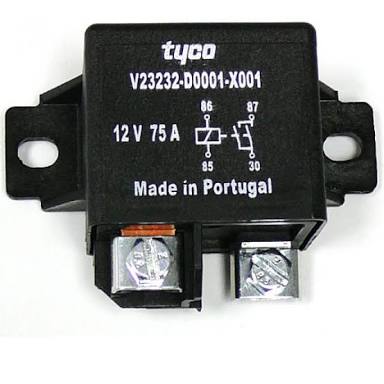HOW TO CONVERT A 12V RELAY TO A 6V RELAY AND USE IT IN A 6V DRIVEN SYSTEM.
But one of the drawbacks in using relays is that most pcb-mount relays comes in 12v package and cannot be driven by 5-6v supply as in the case of microcontroller unit, so the need for a 6v relay arises.
But assuming you are designing a microcontroller unit which requires 5v to operate then you need a 6v relay(which can also be driven by a 5v power supply source) for this.How can you source this 5v relay?
That's the essence of this article.
I will be teaching you how to convert a readymade 12v, 400ohms relay to a 6v, Xohms relay.
NOTE: YOU ARE ONLY ALLOWED TO CONVERT NOT LESS THAN 50% OF THE ORIGINAL RELAY VOLTAGE RATING. Eg. in reducing a 12v relay's voltage during the conversion, you are not allowed to go below 50%(6v) of the 12v nominal rating. REASON: TO ENABLE THE MAINTAINING OF THE REQUIRED MAGNETIC FLUX NEEDED TO PULL THE RELAY CONTACTS.NOTE: "Xohms" means unknown resistance.
HOW TO CONVERT A 12V, 400ohms RELAY TO A 6V, Xohms RELAY.
From the equation P=V^2/R........
where: P=relay power.(P)
V=relay driving voltage.(12v)R=relay coil resistance.(400ohms)
So, lets find the required power needed to produce sufficient magnetic flux that can pull the relay contacts effectively(This should be kept constant)...*Old relay parameters:
P=XwattsV=12V
R=400ohmsP=12^2/400...
P=0.36watts(360mW).
So, 0.36watts is the relay power needed to pull the relay contacts. We are going to keep this value constant in our next calculation...*New relay parameters:
P=0.36watts(kept constant as we said).V=5+6/2=>11/2=>5.5V(average voltage for both 5v and 6v supply use)
R=Xohms.Calculation begins......
From the formula=>R=V^2/P
R=(5.5)^2/0.36R=84.03ohms
R=~84ohmsSo Xohms of our new relay will be 84ohms
over all parameter of our relay after conversion will be...P=0.36watts
V=5.5V(this means it can be used in both 5v and 6v system)R=84ohms
HOW TO PLUG IN THESE PARAMETERS IN THE OLD RELAY PRACTICALLY IN ORDER TO MAKE THE CONVERSION WORK.Open the relay...
Disconnect one of the coil wire from its pin where it was soldered(usually the one at the top, that is the last winding)Measure the coil resistance with a digital multimeter set in ohms range.(It should give you a value within the range of 400ohms as was written on the coil label on the relay)
Start unwinding the coil until you get a coil resistance of about 84ohms as we calculated.Make sure you measure per 50 unwinding turns to avoid going below the 84ohms range unknowingly.




No comments:
Post a Comment